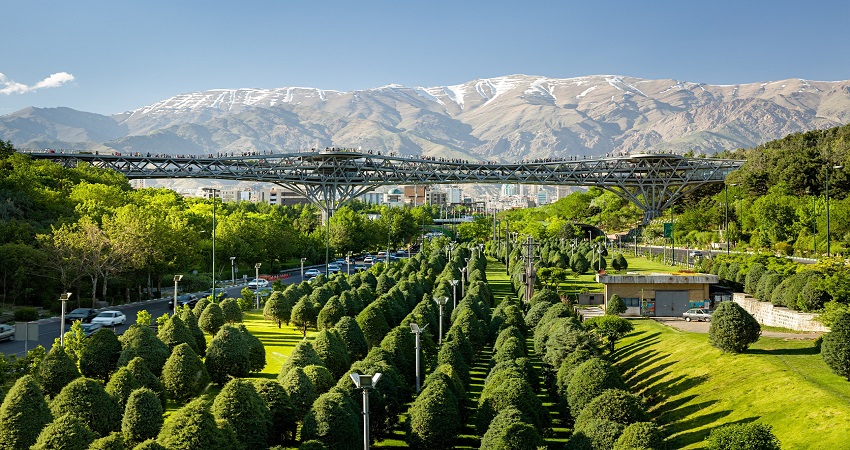Tabiat Bridge

Varzaneh Desert
February 5, 2020
Milad Tower Tehran
February 27, 2020Tabiat Bridge
Tabiat Bridge is the largest pedestrian crossing in Tehran with 270-meter-long, and has become a pedestrian link between the two natural areas of the city.
The Tabiat Bridge was designed by Leila Araghian as part of a local race to design a bridge to connect two parks in northern Tehran separated by a highway. Construction of the bridge began in 2010 and was completed in October 2014 using 2000 tons of steel and 10,000 cubic meters of concrete.
Building a bridge over a large highway has been described as a major challenge, with temporary platforms and tunnels built to ensure that nothing falls down the road. This three-floor building has several restaurants and cafes and several benches for people to use in the middle of the way.

This Bridge crosses three main highways in Tehran. It is currently the largest pedestrian bridge in Iran, connecting Ab-o-Atash Park from the west to Taleghani Park in the east.
This Bridge is inspired by two famous Isfahan bridges, Si-o-se-pol and Khaju bridge, which is a place for people to gather, read poetry, and traditional tea houses.
The global architectural award program ‘The Architizer A+Awards’ has selected Iran’s Tabiat (Nature) Bridge as one of the winners in the +engineering category.
But one of the most important goals of designing and constructing the Tabiat Bridge as Iran’s largest bridge without a car is to meet the need for pedestrians to walk and have fun. The similarity of the design of this famous bridge to the tree in Tehran emphasizes its compatibility with the environment and nature.

